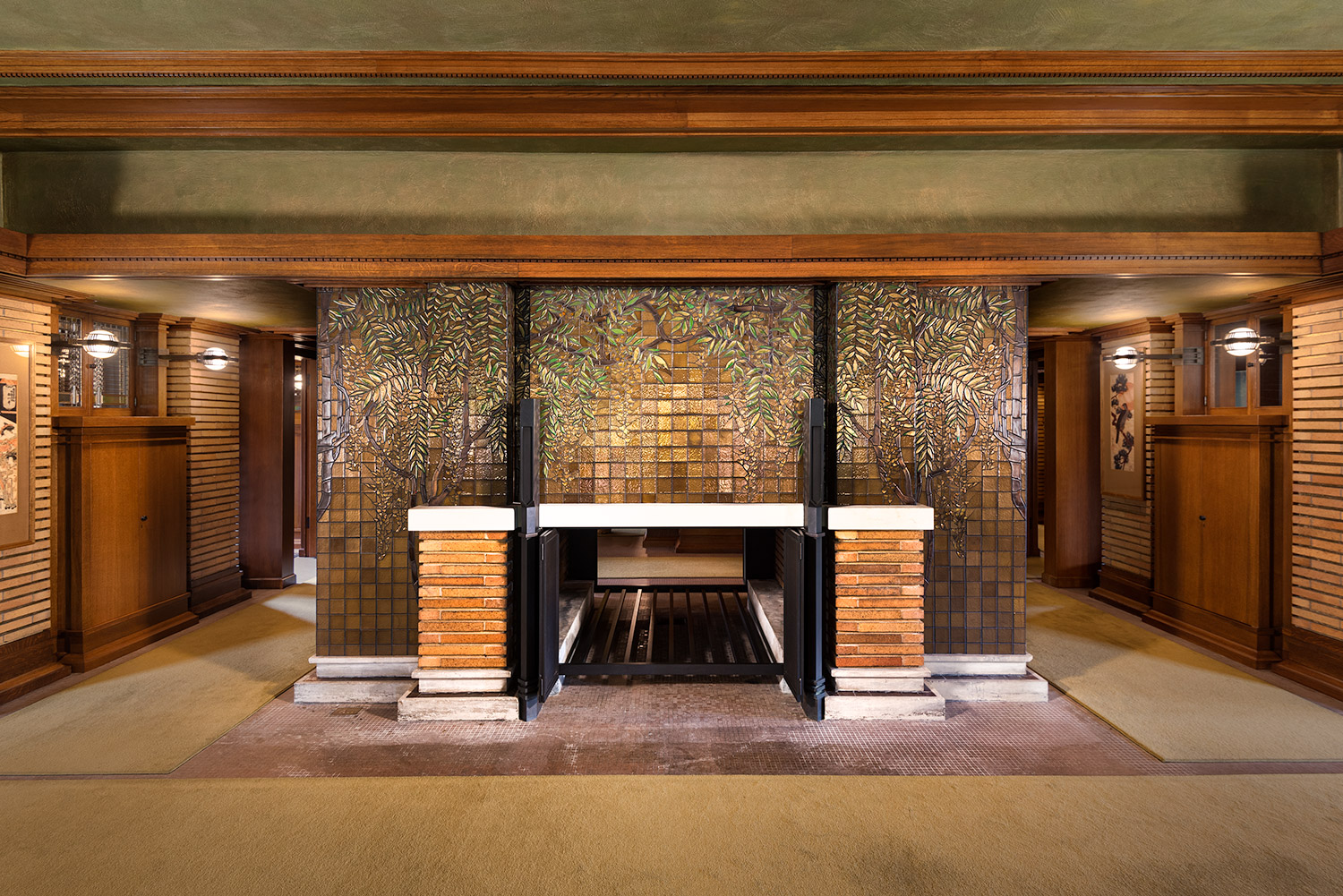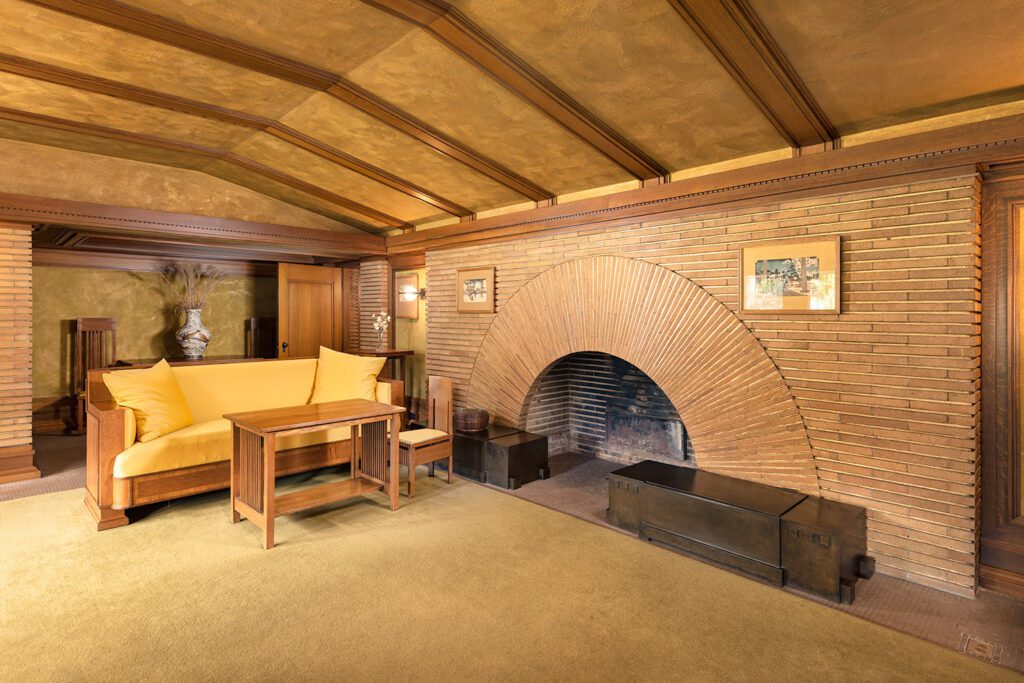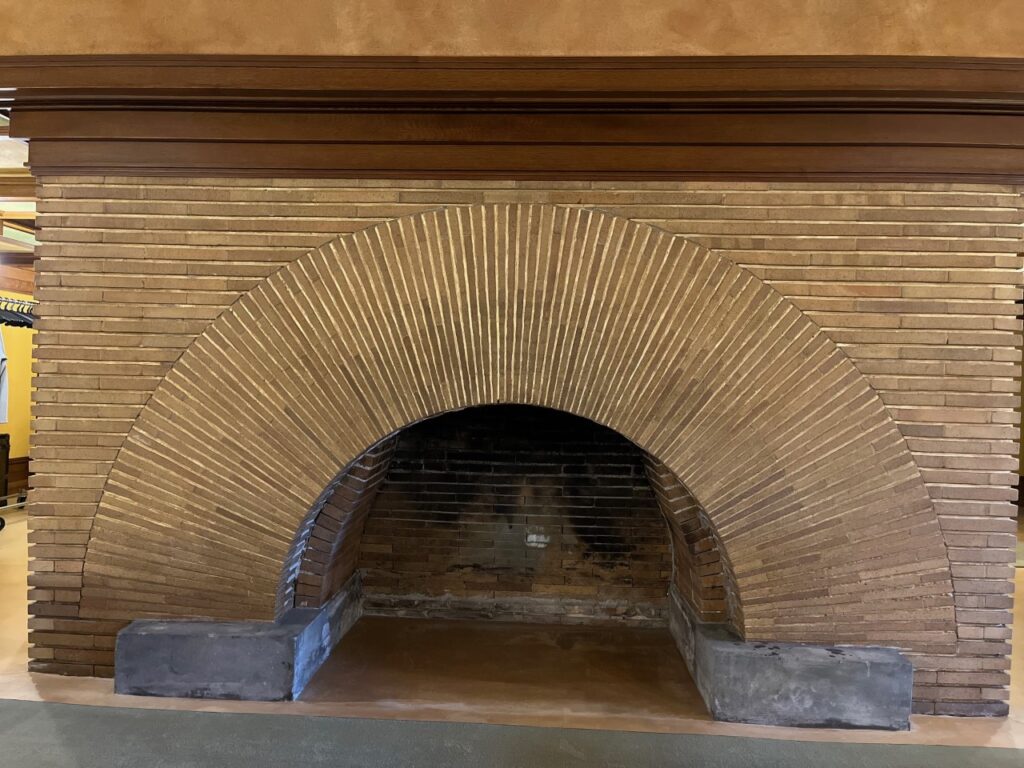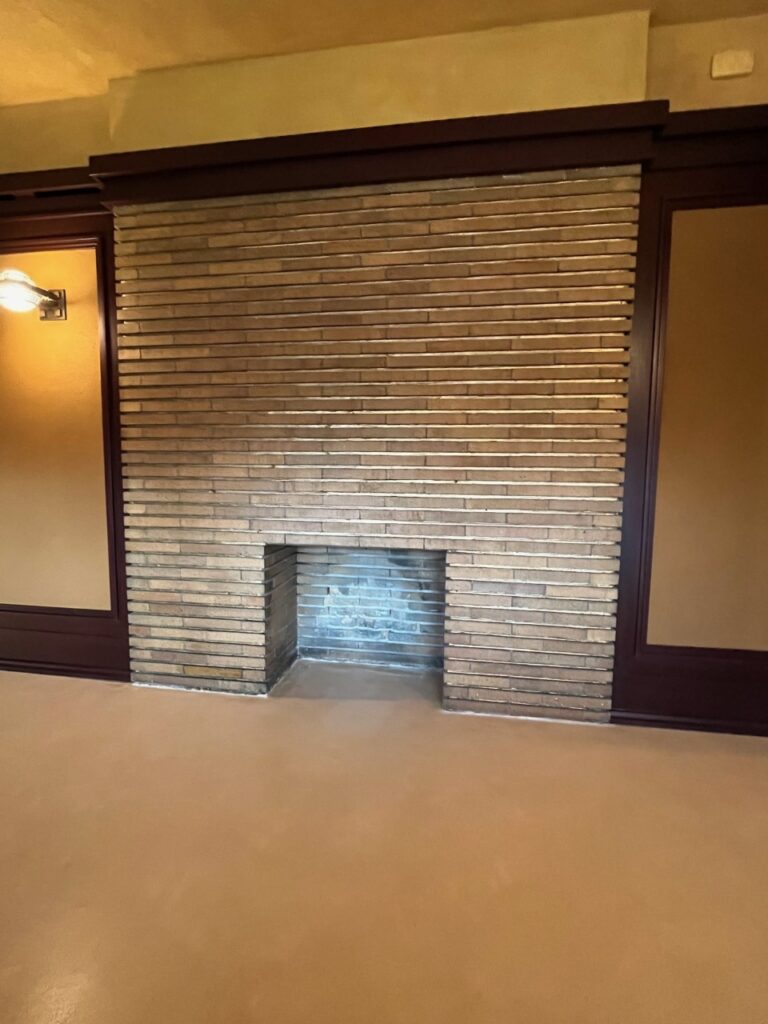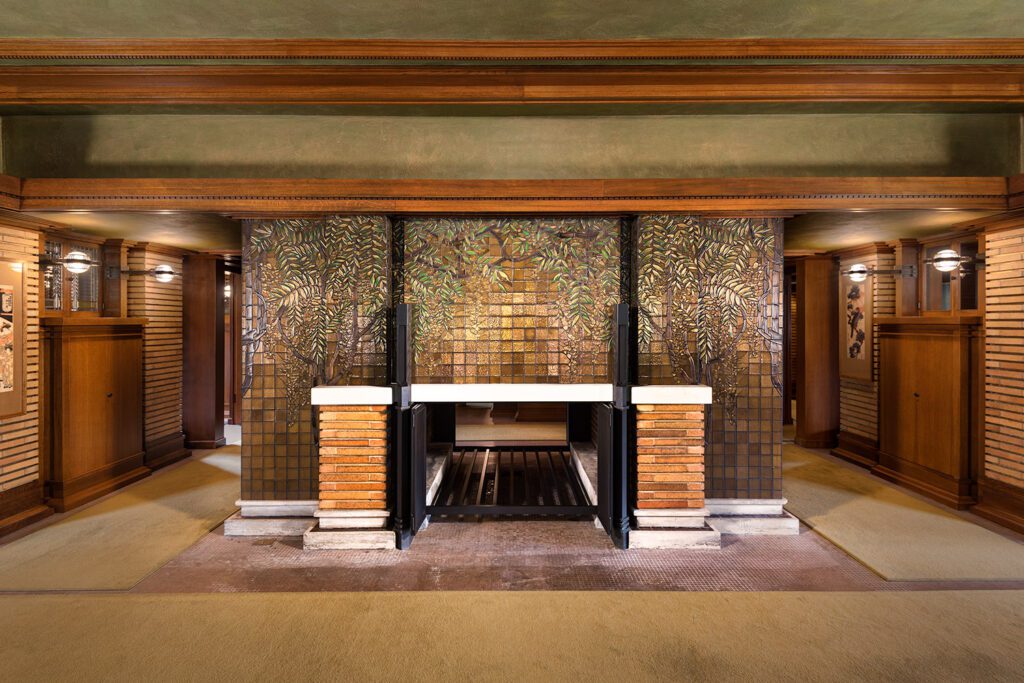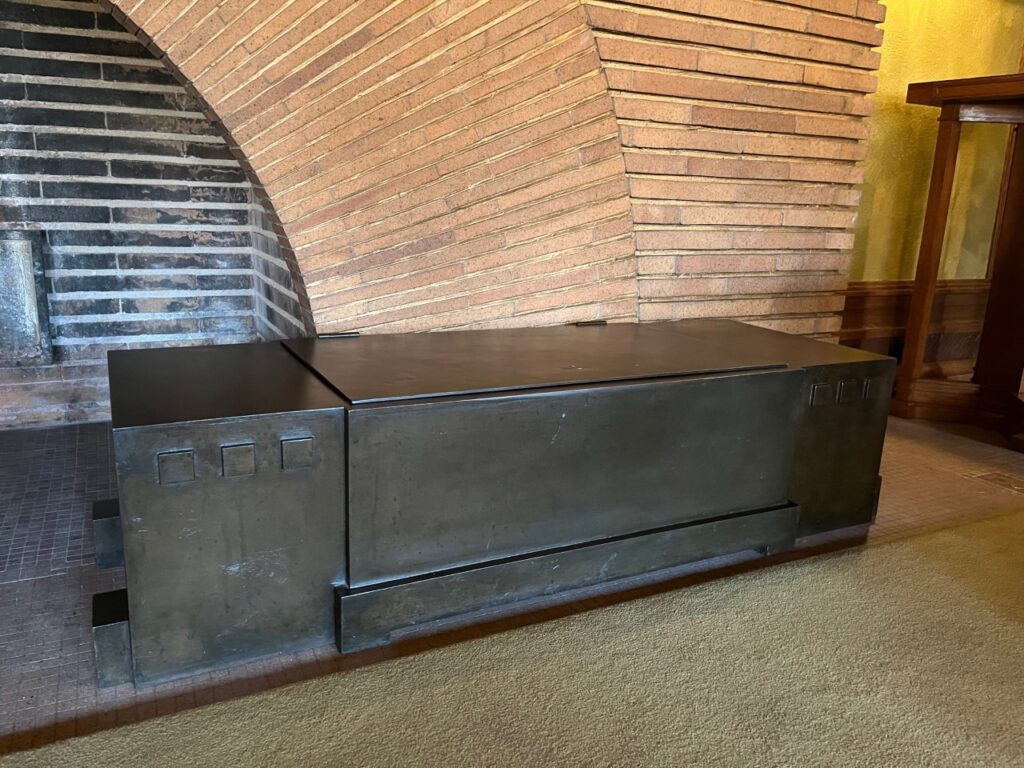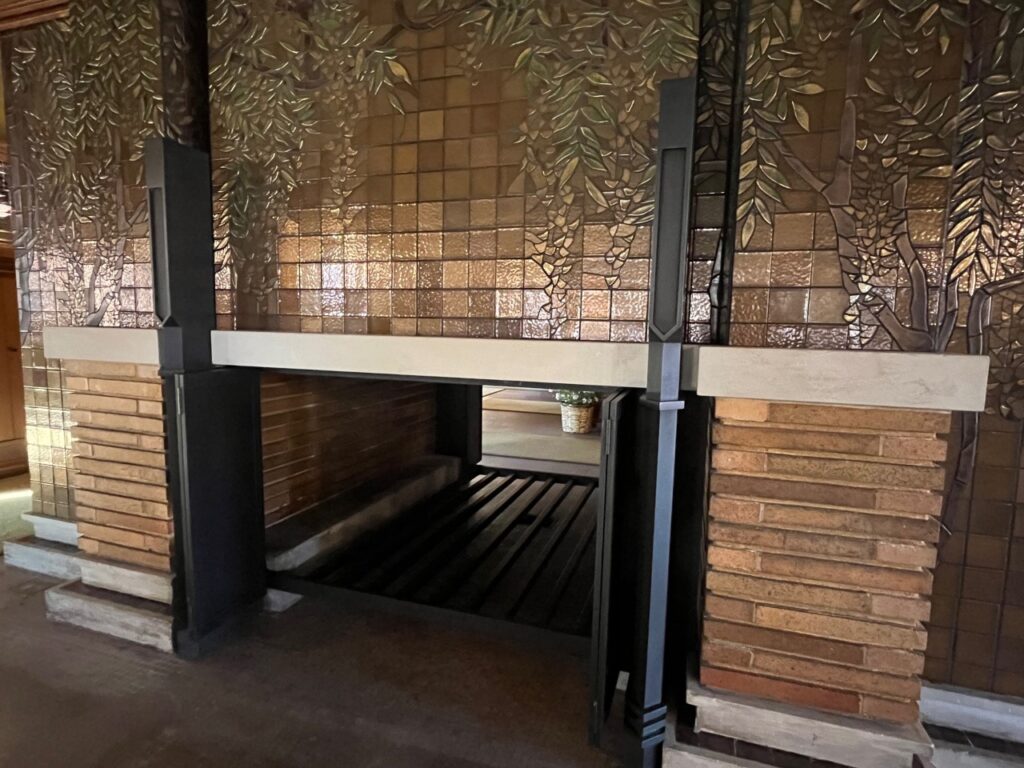Frank Lloyd Wright felt the hearth was the heart of the home. Not surprisingly, the Martin House features four fireplaces. Each tells a story, such as the pair of beautiful sunburst-patterned fireplaces. The first is an inviting golden-mortared hearth that dominates the north wall of the first-floor reception room; while the second is its twin located in the lower level ballroom—a space originally utilized by the family for hosting larger get-togethers and at-home kindergarten. In addition, there is a smaller, rectilinear example in the intimate second-floor guest bedroom suite.
Perhaps the grandest of all: the prominent central fireplace. Here, a welcoming double-sided fireplace serves multiple purposes. It is a massive, yet open, spatial partition between the entry hall and unit room; the figurative and symbolic anchor of the home; and the “canvas” for an elaborate wisteria-themed mosaic.
Wright was also known to design complementary accessories for his fireplaces. In the Martin House reception room, there are two hefty bronze-plated iron fuel boxes that are positioned on either side of the fireplace. The fuel boxes on display today are original, designed by Wright and fabricated by the Winslow Brothers Company. They function not only as vessels in which to store firewood, but as a historic photograph clearly illustrates, they were also a spot once used to sit and read a book—perfect for a winter’s day.
There is also a distinctive set of accessories integrated into both sides of the four-sided, main entry fireplace. Two vertical bronze andirons rise up from the floor and are adjoined to an accordion-folding bronze fireplace screen, as well as to a grate within the firebox. Wright described the unit as “one double set of bronze andirons including four posts and bronze paneling on both sides of grate, also grate bars.”
Like other built-ins situated throughout the Martin House, Wright’s inclusion and design of these accessories is another instance in which the architect succeeds in “client-proofing” the home so as not to disrupt the aesthetics of the mosaic, the hall, or the living room.
In order to preserve the Martin House for generations to come, these fireplaces are no longer active. Using our creative imagination, however, we can envision the many ways in which members of the Martin family, along with their friends and invited guests, might have experienced the warmth and glow from the crackling flames—just as Wright intended.

